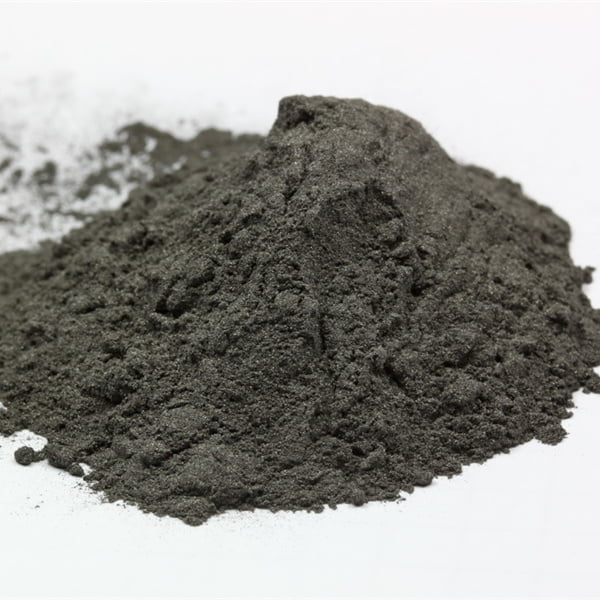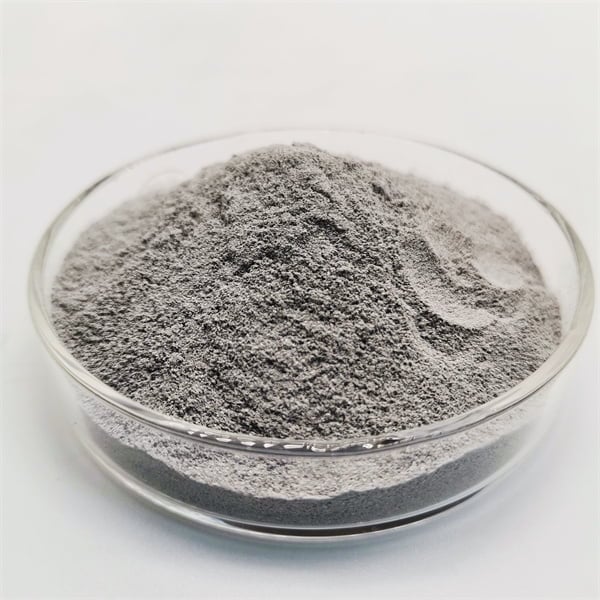Utrustning för gasatomisering
Innehållsförteckning
Atomisering av gas är en nyckelprocess som används för att producera fina metallpulver med exakt kontroll av partikelstorleken. Den här guiden ger en omfattande översikt över gasatomiseringsutrustning, inklusive arbetsprinciper, typer, applikationer, designöverväganden, leverantörer, installation och drift.
Hur fungerar gasatomisering?
Vid gasatomisering används gasstrålar med hög hastighet för att krossa smält metall till fina droppar som stelnar till pulverpartiklar. Denna tabell sammanfattar de viktigaste principerna:
| Arbetsprincip | Beskrivning |
|---|---|
| Ström av smält metall | Smält metall hälls genom ett munstycke in i finfördelningskammaren |
| Gasstrålar med högt tryck | Kraftiga gasstrålar (N2, Ar) sprutas ut från finfördelaren |
| Metall Ström Uppdelning | Gasstrålarna sönderdelar snabbt metallen till en spray av fina droppar |
| Snabb stelning | Dropparna stelnar snabbt till pulverpartiklar på grund av snabb kylning |
| Puderkollektion | Pulverpartiklarna samlas upp i kärl under kammaren |
Den viktigaste fördelen med gasatomisering är möjligheten att styra partikelstorleksfördelningen genom att justera processparametrarna. Detta gör den lämplig för att producera pulver för avancerade applikationer.
Typer av gasatomisatorer
Det finns två huvudtyper av gasförstoftningssystem:
Atomiserare med sluten koppling
- Atomiseringen sker i en sluten kammare som är direkt ansluten till metallhällmunstycket
- Möjliggör användning av inert/kontrollerad atmosfär
- Begränsad flexibilitet i utformningen
Atomiserare med fritt fall
- Ström av smält metall faller fritt genom atomiseringskammaren
- Ger större flexibilitet i utformningen
- Öppen för atmosfär
I denna tabell jämförs de två typerna:
| Parameter | Sluten koppling | Fritt fall |
|---|---|---|
| Kontroll av atmosfären | Utmärkt | Begränsad |
| Flexibilitet i designen | Begränsad | Hög |
| Förbrukning av gas | Lägre | Högre |
| Kvalitet på pulver | Överlägsen | Måttlig |
| Underhåll | Utmanande | Relativt enkelt |
Huvudkomponenter
De viktigaste komponenterna i en gasförstärkare inkluderar:
- Enhet för smältning och hällning
- Atomiseringskammare
- Gasförsörjning med högt tryck
- System för uppsamling av pulver
- System för temperaturkontroll
- Kontrollkonsol

Tillämpningar av gasatomisering
Gasatomiserade pulver används i många kritiska applikationer:
| Industri | Tillämpning |
|---|---|
| Flyg- och rymdindustrin | Pulver av superlegeringar för motorer och flygplanskroppar |
| Fordon | Pulvermetallurgiska komponenter |
| Medicinsk | Implantatmaterial som titan- och koboltlegeringar |
| Elektronik | Löd- och hårdlödningspulver |
| Additiv tillverkning | Råmaterialpulver för 3D-printing |
| Hårda metaller | Pulver av cementerad hårdmetall |
| Magneter | Magnetlegeringar för sällsynta jordartsmetaller |
Möjligheten att exakt kontrollera partikelstorlek och morfologi gör gasatomiserade pulver idealiska för avancerad materialproduktion.
Överväganden om design av gasförångare
Rätt utformning är avgörande för att uppnå önskade pulveregenskaper. Viktiga faktorer är bland annat:
Atomiseringsgas
- Typ av gas - inert (Ar, N2) eller reaktiv (O2, N2+H2)
- Gastryck och flödeshastighet
Munstyckets utformning
- Munstycksdiameter, form, antal munstycken
- Munstyckskonfiguration - ringformad slits eller diskreta munstycken
Atomiseringskammare
- Kammarens form och storlek
- Fritt fall eller sluten koppling
Insamlingssystem
- Utformning av uppsamlingstratt
- Separering av fina och grova pulver
- Minimering av oxidation
Kylningshastighet
- Temperatur och tryck i gasen
- Avstånd mellan munstycke och uppsamlingstratt
Automatisering
- Styrsystem för säker och repeterbar drift
- Övervakning och registrering av data
Rätt design är avgörande för att uppnå önskade egenskaper som partikelstorlek, form och mikrostruktur.
Leverantörer av gasatomiseringssystem
Det finns många utrustningstillverkare som designar och bygger gasatomiseringssystem. Här är några av de största leverantörerna:
| Leverantör | Plats |
|---|---|
| Avancerad materialbearbetning (AMP) | USA |
| PSI | USA |
| 3D metallpulver | USA |
| Phenix System | Frankrike |
| Överlägset skott | Kanada |
| Tillverkning av cykloner | Kanada |
| ISL Vakuum技术 | Kina |
Köpare måste utvärdera leverantörer baserat på:
- Branscherfarenhet och anseende
- Meritlista över framgångsrika installationer
- Flexibilitet i design och kundanpassning
- Service och support efter försäljning
Priserna varierar från cirka $500.000 till över $2 miljoner baserat på kapacitet, funktioner och kundanpassning.
Installation och drift
Korrekta installations- och driftsprocedurer är avgörande för gasförstärkare. Här är några viktiga punkter att tänka på:
- Fundamenten ska vara utformade för att klara vibrationer under drift
- Alla verktyg som ström, inert gas, kylvatten måste anslutas på lämpligt sätt
- Styrsystemen ska kalibreras före användning
- Initial driftsättning bör göras med metaller med låg temperatur
- Utbildning av operatörer är avgörande för säkerhet och korrekta rutiner
- Förebyggande underhåll enligt leverantörens riktlinjer bör schemaläggas
Kontinuerlig övervakning och analys av partikelstorleksfördelning och morfologi krävs för att säkerställa att önskade pulveregenskaper uppnås.
Underhåll och felsökning
Rutinmässigt underhåll är avgörande för gasatomisatorns tillförlitlighet:
| Uppgift | Frekvens |
|---|---|
| Inspektera munstycke och kammare | Dagligen |
| Kontrollera kylledningarna | Veckovis |
| Rent insamlingssystem | Månadsvis |
| Inspektera gasledningar för läckage | Månadsvis |
| Kontrollera styrinstrument | Månadsvis |
| Översyn av smältapparat | Årligen |
Uppkomna problem och felsökningstips:
| Utgåva | Möjlig orsak | Lösning |
|---|---|---|
| Oregelbunden pulverstorlek | Obstruerat/skadat munstycke | Rengör eller byt munstycke |
| Dåligt utbyte av pulver | Lågt gastryck | Kontrollera kompressorns funktion |
| Oxiderat pulver | Läckage i kammaren | Täta läckor och spola med inert gas |
| Segregering av pulver | Felaktig utformning av kollektorn | Optimera vinklarna i insamlingstratten |
| Igensättning av munstycke | Föroreningar i metall | Använd metall med hög renhet, filtersmältor |
Ett strikt schema för förebyggande underhåll och övervakningsprocedurer är avgörande för att minimera stilleståndstiden. Personalen bör vara välutbildad i felsökningsteknik.
Att välja en leverantör av gasatomisatorer
Här är viktiga överväganden för att välja en leverantör av gasförstärkare:
Teknisk expertis
- Erfarenhet av att konstruera finfördelare för specifika metaller eller legeringar
- Möjlighet att uppnå önskad partikelstorlek och morfologi
- Förstå krav som inert drift, skyddsatmosfärer
Anpassning
- Flexibilitet att modifiera designen för produktionskapacitet, pulveregenskaper
- Integration av ytterligare funktioner som avgasare, legeringstillsatser
Kvalitet
- Konsekvent pulverproduktion som uppfyller specifikationerna
- Tillförlitlig utrustning med minimal stilleståndstid
- Anseende för högkvalitativ tillverkning
Service
- Teknisk support för installation, uppstart och drift
- Utbildningsprogram för operatörer
- Tillgång till reservdelar och fältservice
Prissättning
- Total kostnad inklusive extrautrustning, kontroller, tillval
- Kostnads- och nyttoanalys av anpassade funktioner
- Service efter försäljning och underhållsavtal
Att prioritera nyckelkrav och jämföra leverantörer är viktigt för att välja rätt gasförstärkare.
För- och nackdelar med gasatomisering
Fördelar
- Utmärkt kontroll av partikelstorlek och morfologi
- Tillämplig på ett brett spektrum av legeringar
- Inert drift möjlig för att minimera oxidation
- Kontinuerlig pulverproduktion med bra utbyte
- Automatiserad drift för säkerhet och konsekvens
Begränsningar
- Höga kapital- och driftskostnader
- Begränsad flexibilitet vid legeringsförändringar
- Pulver kan kräva sekundär bearbetning
- Inte lämplig för vissa reaktiva legeringar
- Kräver kvalificerad personal för drift
Gasatomisering är den föredragna pulverproduktionsmetoden när exakt kontroll över pulveregenskaperna är avgörande.
Gasatomisering jämfört med alternativa metoder
Jämförelse med vattenatomisering
- Tätare partikelstorleksfördelning med gasatomisering
- Lägre syreupptagning jämfört med vattenförstoftning
- Högre investeringskostnad än vattenförstoftning
- Begränsat legeringsområde jämfört med vattenatomisering
Jämförelse med plasmaatomisering
- Finare pulverstorlekar kan uppnås genom plasmaatomisering
- Dyrare än gasatomiseringssystem
- Begränsad produktionskapacitet med plasmaatomisering
- Liknande kapacitet för inert atmosfär
Jämförelse med elektrodinduktionssmältning
- Lägre produktivitet än gasatomisering
- Begränsad möjlighet att kontrollera partikelstorlek och -form
- Enkel process till låg kostnad jämfört med gasatomisering
- Endast lämplig för lättsmälta metaller
Gasatomisering ger den bästa balansen mellan kontroll av partikelstorlek och rimlig produktivitet för många kritiska pulvermetallurgiska tillämpningar.
Framtidsutsikter för gasatomiseringsteknik
Framtidsutsikterna för gasatomisering ser positiva ut tack vare flera trender:
- Ökad användning av additiv tillverkning driver efterfrågan på fina pulver
- Behov av anpassade pulveregenskaper för avancerade material
- Utveckling av nya munstycksdesigner för gasförstoftning
- Expansion till ett bredare sortiment av legeringar, inklusive metalloxider
- Automation och IoT-integration för bättre processövervakning
- Användning av gasatomisering för mikrostrukturerade partiklar
- Användning av gasförstoftning i utvecklingsländer
Utrustning för gasatomisering kommer att fortsätta utvecklas för att uppfylla kraven på pulver för ny teknik och avancerade material.

VANLIGA FRÅGOR
F: Vilken är den minsta partikelstorleken som kan uppnås med gasatomisering?
S: Gasatomisatorer kan producera pulver ner till ca 5 mikrometer genom att optimera parametrar som gastryck, munstycksdesign och uppsamlingsavstånd. Produktionshastigheten minskar dock avsevärt vid mycket fina storlekar.
F: Hur mycket övervakning och kontroll krävs vid drift av en gasförstärkare?
S: Kontinuerlig övervakning av temperatur, gastryck och pulverstorleksfördelning är nödvändig. Automatiserade programmerbara logiska kontroller används vanligtvis för att övervaka och reglera alla processparametrar.
F: Vilket underhåll behöver göras på utrustning för gasatomisering?
S: Munstycken, gasledningar och filter måste inspekteras regelbundet och bytas ut om de är blockerade. Vattenkylningsledningarna måste kontrolleras. Smältenheten kräver årlig översyn. Korrekt underhåll minimerar stilleståndstiden.
F: Hur snabbt kan gasförstärkare bytas mellan olika legeringar?
S: Legeringsbyte tar 1-2 dagar beroende på materialsekvensen. Munstycken och linjer måste rensas för att undvika korskontaminering mellan legeringspulver.
F: Vilka säkerhetsåtgärder krävs för gasatomisering?
A: Korrekt skyddsutrustning för personalen, gasmonitorer, nödstopp och utbildning i säkerhetsprocedurer är obligatoriska. Drift med inert gas förbättrar också säkerheten.
F: Vad är den typiska produktionskapaciteten för industriella gasförstärkare?
A: Produktionskapaciteten varierar från 50 kg/timme för bänkskåpsenheter i labbskala till över 1000 kg/timme för industriella gasförstärkare med hög kapacitet, beroende på design och munstycksstorlek.
F: Vilken kompetens krävs för att använda gasatomiseringsutrustning på rätt sätt?
S: Personalen behöver utbildning inom områden som smältning, pulverbearbetning, instrumentering, mekaniska system och felsökning. Metallurgiska kunskaper är också mycket meriterande.
Dela på
MET3DP Technology Co, LTD är en ledande leverantör av lösningar för additiv tillverkning med huvudkontor i Qingdao, Kina. Vårt företag är specialiserat på 3D-utskriftsutrustning och högpresterande metallpulver för industriella tillämpningar.
Förfrågan för att få bästa pris och anpassad lösning för ditt företag!
Relaterade artiklar

Högpresterande segment för munstycksvingar: Revolutionerande turbineffektivitet med 3D-utskrift i metall
Läs mer "Om Met3DP
Senaste uppdateringen
Vår produkt
KONTAKTA OSS
Har du några frågor? Skicka oss meddelande nu! Vi kommer att betjäna din begäran med ett helt team efter att ha fått ditt meddelande.

Metallpulver för 3D-printing och additiv tillverkning
FÖRETAG
PRODUKT
cONTACT INFO
- Qingdao City, Shandong, Kina
- [email protected]
- [email protected]
- +86 19116340731








